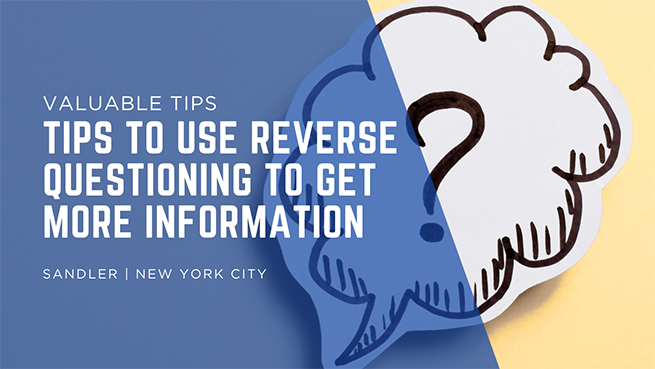As sales professionals, we know that asking the right questions is often more important than having the right answers. One of the most effective questioning strategies is reverse questioning, a technique that shifts the conversation from surface-level inquiries to deeper insights.
What Is Reverse Questioning?
Reverse questioning means responding to a prospect’s question with a question of your own. Instead of immediately answering, you take the opportunity to uncover their real concerns.
For example, if a prospect asks, “How long does delivery take?” instead of simply stating a timeframe, you could respond with:
➡️ “Delivery timelines are important. Can you help me understand what’s driving your urgency?”
This technique moves the discussion beyond logistics and into what really matters to the buyer.
Why Reverse Questioning Works
Using reverse questioning helps you:
✅ Uncover Hidden Pain Points – Learn what’s truly motivating the prospect’s decision.
✅ Position Yourself as an Advisor – Build trust by showing genuine curiosity.
✅ Tailor Your Approach – Adjust your pitch based on the deeper insights you gain.
Reverse Questions You Can Use Today
Here are a few simple ways to apply reverse questioning in your conversations:
💡 “That’s a great question. Why do you ask?”
💡 “I’m glad you brought that up. What makes that important to you?”
💡 “That comes up often. What are you hoping I’ll tell you?”
Avoid Overusing Reverse Questioning
While this is a powerful tool, balance is key. Avoid making prospects feel like they’re being interrogated.
Instead:
✔️ Provide valuable responses after reversing a question.
✔️ Share insights to build rapport and credibility.
✔️ Keep the conversation natural and engaging.
Mastering reverse questioning helps you take control of sales conversations, uncover deeper insights, and ultimately close more deals. The best salespeople don’t just answer questions—they ask the right ones.
Want to refine your questioning strategies? Join us for an upcoming Sandler Sales Training session to take your sales conversations to the next level!






